Unlocking the Secrets of Sedum
An introduction to the world of sedum is like stepping into a diverse and vibrant garden full of life and color. Gardeners all over are drawn to these hardy plants, which come in an array of shapes and hues, capable of fitting into nearly any gardening nook. Picture the lush carpets of greens and bursts of pinks and yellows that could adorn your garden beds or outdoor containers – sedum brings an unmatched versatility to planting designs.
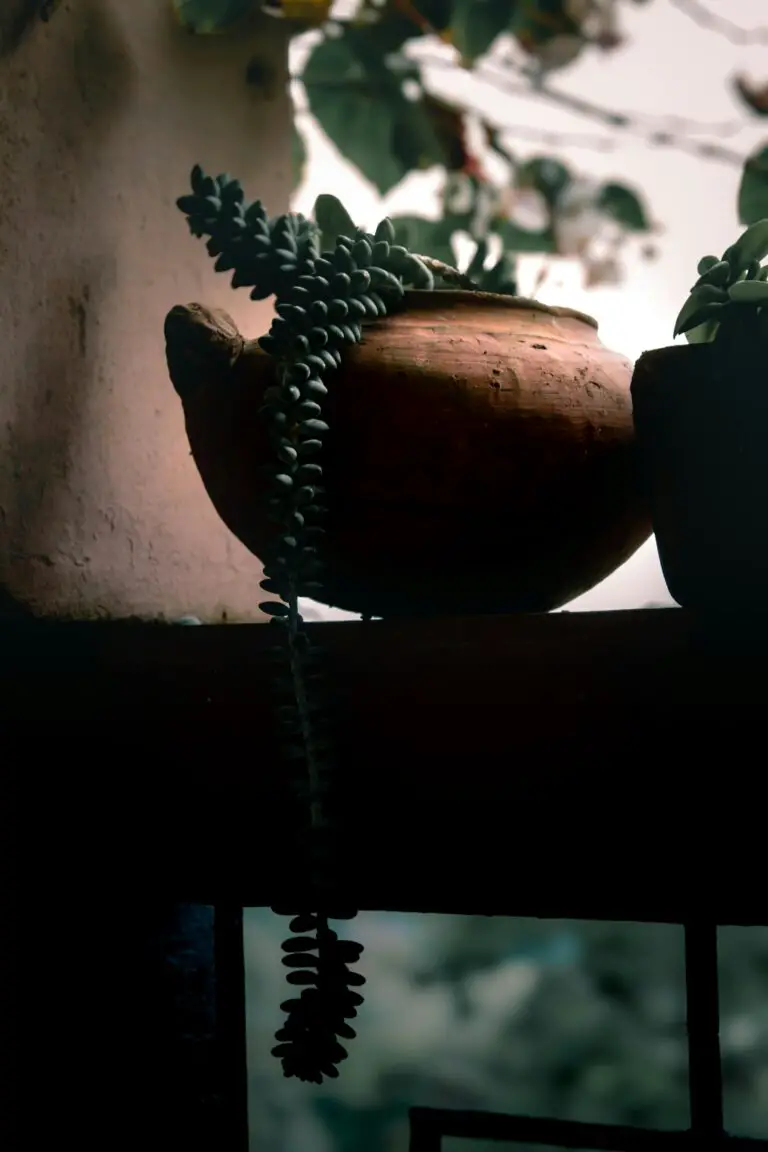
From personal experience, the joy of planting sedum species like the eye-catching ‘Autumn Joy’ or the ground-hugging ‘Dragon’s Blood’ is watching them transform spaces. Friends have marveled at how a once overlooked side yard turned into a thriving highlight with a collection of stonecrops. Each species, with its unique texture and flowering time, plays a role in the garden’s performance throughout the seasons.
The genus Sedum contains a treasure trove of species, each with its own preferred environment and care needs. Whether you have a sunny spot that needs filling or a shady corner where other plants struggle to thrive, there’s a sedum out there for the task. Our extensive guide, “Sedum Plants Unearthed: Growing Tips and Varieties”, helps gardeners discover just the right species for their particular garden scenario.
When considering where to plant sedum, think about the kind of story you want your garden to tell. Do you imagine a serene green oasis or a playful palette of succulents dancing in the breeze? Each choice of sedum placement can create a unique narrative in your garden, one that reflects your personal style and embraces the ecological balance of your outdoor space.
Essential Conditions for Thriving Sedum
Let’s dive into what makes sedum tick – or should we say, sprout! Imagine a landscape glowing with the vibrant colors of sedum plants, bustling with life and vigor. That dreamy garden can be your reality if you get these conditions just right. First on the list is the foundation of all great gardens: soil. Sedum plants are like the free spirits of the plant world; they love well-drained soil. Think of it as their version of a high-thread-count bed sheet—it’s got to be just right. Whether you’ve got sandy soils by the beach or rocky terrain in the mountains, sedum will settle in happily.
Next, bask in the thought of the warm, nurturing sunlight. These hardy succulents are sun worshipers, thriving under full sun conditions like beach-goers soaking up the rays. But don’t fret if your garden is a little on the shadier side. Sedums can tolerate partial shade too, making them as versatile as they are beautiful.
Finally, let’s talk climate! Sedum comfortably straddles the line between different hardiness zones. Whether you live in the frosty embrace of zone 3 or the balmy hug of zone 9, these plants can adapt and flourish. Just think of them as the all-terrain vehicles of the gardening world; they’re ready for any conditions you can throw at them, including the occasional drought. Looking for a plant that’s both tough and enduring? Sedum has you covered.
Imagine the joy of watching your sedum thrive throughout the seasons, changing hues and weathering all climates with elegance. Those are the kind of real-life stories that gardeners love to share.
But hey, let’s take a visual break and check out this excellent video that showcases the enduring charm of sedum and provides practical advice on fostering the perfect environment for these robust plants:
And if you want to delve deeper into the succulent world, don’t miss our guide on Haworthia Care: Secrets to Thriving Succulents Unearthed, which offers expert advice and insights.
With these easy-to-follow tips and techniques, you’re well on your way to creating a lush and lively sedum haven that’ll be the envy of every green thumb on the block!
Finding the Perfect Spot: Where to Plant Sedum
When it comes to creating a lush garden, choosing the right location to plant your sedum can make all the difference. Whether you’re nurturing ground cover varieties that spread like a living mosaic or tending to statuesque upright species that command attention, the placement of these hardy succulents is key to cultivating a captivating green space.
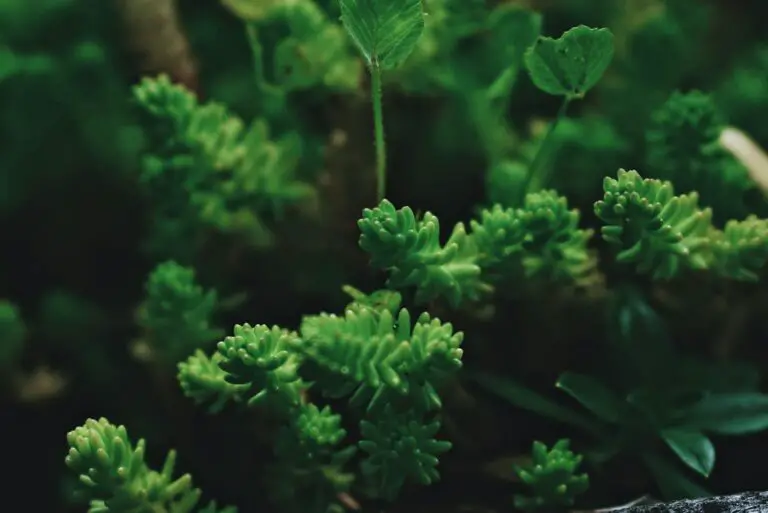
Imagine a cascading sedum variety draping over a sunny rock wall, softening the hard edges with a waterfall of foliage. Or picture upright sedum with clusters of starry flowers acting as natural backdrops for lower-growing plants, providing structure and interest throughout the seasons. The versatility of sedum doesn’t end with their various forms; it also extends to the array of environments they thrive in.
For a start, sedums are sun worshippers, and most varieties flourish in areas that receive plenty of light. However, the beauty of sedum lies in its adaptability. If your garden has partial shade, don’t despair. Many sedum species are tolerant of less than ideal light conditions, and with the right care, they can still reward you with their robust vigor. To gain insights into the specific needs of sedum, gardeners can turn to resources like Harvest to Table, which provides a wealth of information on sedum care.
Assessment of soil drainage is equally crucial for your sedum sanctuary. These plants despise ‘wet feet’ and demand well-drained soil to prevent root rot. In the wild, sedum plants often settle in rocky nooks, triumphing over challenging conditions with their drought-tolerant nature. Emulate this by planting them in raised beds or on slopes, ensuring excess water has a quick escape route.
Furthermore, when selecting where to plant sedum, consider their companions. These unassuming plants can stand their ground alongside aggressive spreaders, like mint, without being overrun. Explore the diverse possibilities and intricate details of pairing plants on our dedicated page for gardening tips, which is filled with ways to enhance your garden’s visual appeal and ecosystem balance.
Ultimately, finding the perfect spot to plant your sedum involves observing and understanding your garden’s unique landscape, microclimates, and soil composition. Once the ideal location is identified, sedum will reward you with minimal maintenance, drought resistance, and a year-round textured tapestry that adds depth and interest to your garden tableau.
Sedum Planting Strategies for Maximum Impact
Imagine tucking into your garden, with a fresh palette of lush sedum awaiting your creativity. As you plot your garden design, consider not just the immediate allure but the eventual tapestry of blooms, the interplay of textures, and the dance of colors throughout the seasons. Sedum, with its diverse range, offers a unique opportunity to craft a living work of art that evolves with time.
Timing is Everything: Bloom Cycles to Consider
When you’re looking to create an impact with sedums, think about the timing of their displays. Some varieties of sedum offer early spring blossoms, while others save their show for the autumnal curtain call. By carefully selecting and placing varieties that bloom at different intervals, you can ensure that your garden beds remain a vibrant focal point from the thawing of the first frost to the last whisper of fall.
Here’s a real-life tip: mix early bloomers like Sedum telephium with late-season stars such as Sedum ‘Autumn Joy’ to keep the visual interest alive. This kind of strategic layering keeps the garden dynamic and engaging well past the peak of summer.
Texture: Playing with Sedum’s Succulent Leaves
The allure of sedum comes not just from its flowers but from its fleshy foliage as well. To maximize the textural contrast in your garden, intersperse sedum with plants that have fine, delicate leaves or tall, spiky grasses. The plump, juicy leaves of the sedum will stand out against a backdrop of airy ferns or willowy lavender, creating a tactile experience that is as delightful to touch as it is to behold.
Here’s a handy video that illustrates the ease with which you can introduce sedum into your garden through cuttings, showcasing the simplicity of growing these resilient beauties:
Color: Crafting the Perfect Palette
With sedums coming in hues ranging from deep burgundy to bright chartreuse, creating a color story in your garden can be immensely satisfying. Plant sedum alongside complementary colors to make them pop—for instance, the gray-green of Sedum ‘Cape Blanco’ against the rich purple of Salvia. Or create a gradient effect with a series of sedums shifting subtly from one shade to the next.
Don’t forget that the color doesn’t end with the blooms. The foliage itself can be a source of sustained color throughout the year, especially with varieties like Sedum ‘Angelina,’ which transitions from golden-yellow in summer to a fiery orange in the colder months.
For more ideas on designing your garden beds, check out this handy guide on how to grow tall sedum and ensure that your sedum stands tall and proud throughout the season.
The Ideal Soil Mix to Enhance Sedum Growth
When it comes to creating a paradise for your sedum, the soil is the unsung hero. Just imagine the rich, well-drained mix that reminds you of that perfect slice of chocolate cake – crumbly, yet moist enough to hold its shape. That’s the kind of environment where sedum truly thrives!
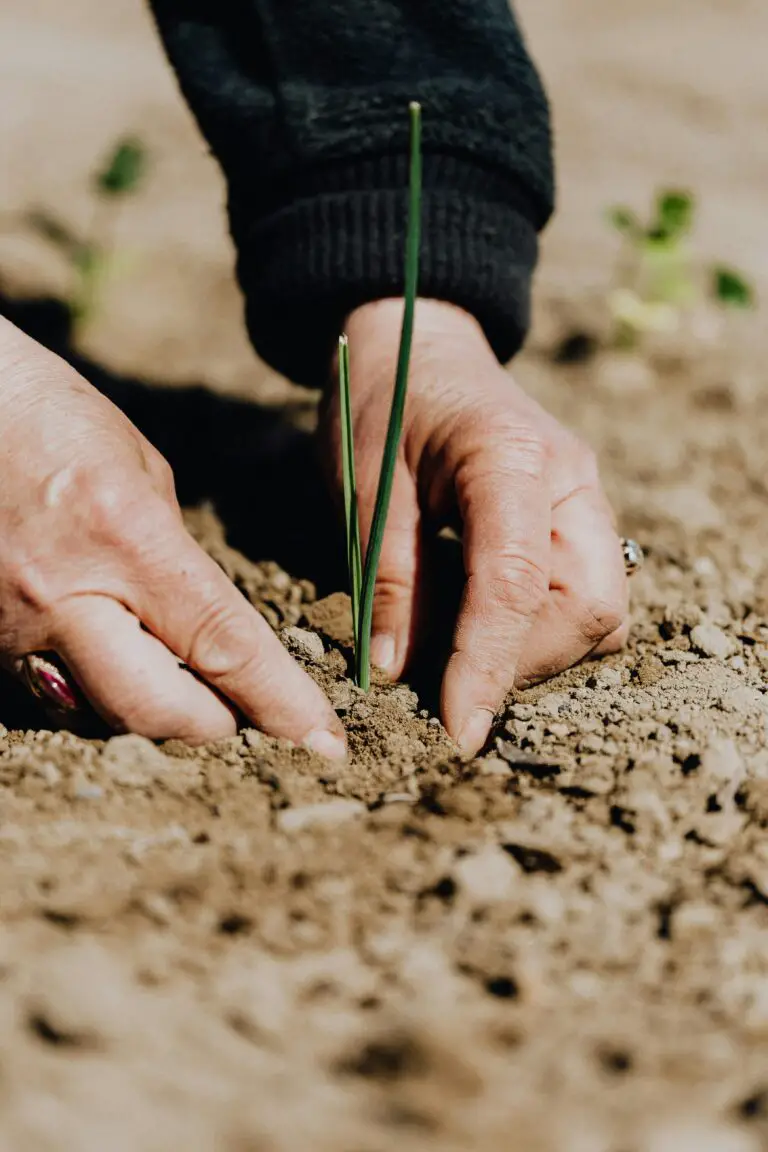
To start off, let’s dive into the ‘dough’ of your garden bakery: the soil composition. Sedum prefers a soil mix that is like a buffet for its roots – one that’s filled with all the good stuff. The base of this mix should have equal parts of garden soil and coarse sand. This combination gives you the drainage capabilities of a champion – saying ‘no thank you’ to water logging while still holding onto just enough moisture.
Next, the secret ingredient – organic compost. Sprinkling a dash of this natural wonder adds nutrients and improves soil structure. Think of it as the fertilizer version of a multivitamin, keeping your sedum robust and ready to face the world. And if you’re after that special zing, consider adding a pinch of perlite or vermiculite. These little white morsels will ‘aerate’ the party, ensuring that the soil is loose and oxygen can flow freely to the sedum’s roots.
Here’s a real-life example for you: Imagine you’ve got a sun-kissed spot in your backyard that’s crying out for some attention. You bring in your wheelbarrow loaded with this tailored soil mix. With each shovel of the sand-compost combo, you’re crafting a bed of luxury for your sedum. It’s the equivalent of laying out a red carpet for your plants, but instead of celebrities, you’re welcoming a throng of vibrant, eager blooms.
One more tip: consistency is key. As you blend and spread your soil mix, imagine dressing a gourmet salad. You want every nook and cranny of your garden bed to be touched by the magic of this mix, allowing your sedum to spread its roots uniformly and without bias. Uniform soil = uniform growth, and that’s the goal for a lush, envy-inducing garden.
Remember, the best soil mix is like a symphony where every instrument plays its part. So keep these tips in mind, give your sedum the VIP treatment with the ultimate soil mix, and watch as your garden transforms into a spectacle of color and life.
Nurturing Sedum: Essential Care and Maintenance
Imagine stepping out into your garden to be greeted by a cascade of vibrant sedum blooms, each one a testament to your green thumb. Attaining this vision is more than just a dream—it’s a reality within reach, provided you apply the best practices for watering, fertilizing, and pruning your sedum plants. Sedum, with its hardy nature and drought tolerance, still flourishes best with attention to detail. So let’s dive into the care and maintenance routine that keeps these succulent beauties thriving.
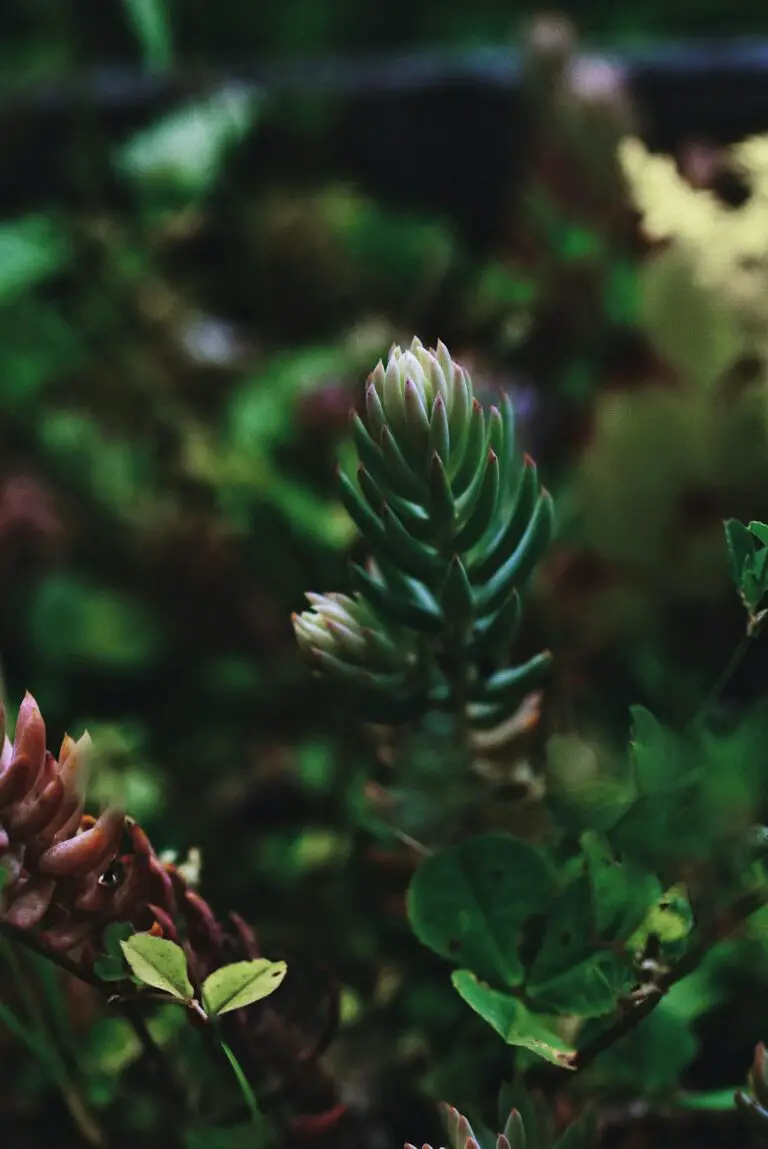
Water Wisely: Quenching Sedum’s Thirst
When it comes to watering sedum, the ‘less is more’ approach reigns supreme. These plants are drought-resistant powerhouses that can endure dry spells without wilting away. The trick lies in maintaining a balance; water them enough to keep the soil slightly moist, particularly during the growing season. A deep soak followed by a period of drying out is ideal. To illustrate, imagine how the natural precipitation patterns in their native habitat oscillate—you want to mimic that in your watering regimen. Overwatering can lead to waterlogged roots and, sadly, root rot, which is the Achilles’ heel for these otherwise tough plants.
Fertilize with Finesse: Feeding Your Sedum
Equally important is the nourishment of your sedum, but here too, restraint is key. A light application of a balanced, slow-release fertilizer in the spring can give them the boost they need without overwhelming them. Think of feeding your sedum as you would seasoning a dish—a little goes a long way. Too much fertilizer encourages leggy growth and weakens the plant’s structure. Remember, sedum is accustomed to growing in lean conditions, so they bloom best when not overfed.
Pruning Practices: Sculpting Sedum to Perfection
Finally, pruning is essential to maintain shape and promote healthy growth. Aim to prune your sedum early in the growing season to control its size and encourage bushier growth. This isn’t about haphazardly chopping away at your plants—it’s a thoughtful sculpting process. For instance, pinching back the growing tips can result in a more compact form and potentially more flower clusters. It’s like encouraging the plant to put its energy into flourishing rather than sprawling. Don’t shy away from removing dead or damaged stems either; think of it as clearing the stage for the healthiest parts of the plant to shine.
By following these essential care tips, watering with wisdom, feeding with finesse, and pruning to perfection, you’re setting the stage for your sedum to dazzle the eye and liven up your garden. So roll up your sleeves, because with a bit of love and the right techniques, your sedum sanctuary awaits!
Coordinating with Companions: Sedum and Plant Partnerships
When it comes to creating a visually stunning and ecologically vibrant garden, selecting the right companions for your sedum is like finding the perfect friends for a dinner party. It’s not just about good looks but also about how well they get along, share space, and enhance each other’s presence. Let’s dig into the art of pairing sedum with plants that not only match its aesthetic appeal but also thrive under similar conditions and offer mutual benefits.
Imagine your sedum as the charismatic host of the garden party. Who do you invite to complement its succulent leaves and star-shaped blooms? First on the list are ornamental grasses, bringing a contrasting texture and movement to the party. Grasses like Blue Fescue or Maiden Grass sway with the breeze, creating a dynamic backdrop for the sturdy sedum. Next to join the soiree are lavender and sage, herbs that share sedum’s love for sunny spots and well-drained soil. They contribute fragrant leaves and flowers, adding sensory delight to your garden tableau.

Ever seen the camaraderie between sedum and flowering perennials like Black-Eyed Susans or Catmint? They form a color-rich ensemble that lasts across the seasons. As sedum bursts into autumn hues, its friends keep the color show going, providing a feast for the eyes and a buffet for beneficial pollinators. It’s a real-life example of how co-planting with sedum can create a performance that runs from spring to fall unwaveringly.
But it’s not all about aesthetics; this is a partnership where everyone brings something to the table. Sedum, with its drought tolerance, sets an example for low-water gardening. Meanwhile, its floral friends, like Yarrow and Coreopsis, are known for attracting helpful insects that ward off pests, fostering a balanced ecosystem without reaching for the chemical pesticides.
Choosing companion plants for sedum is like composing a symphony where each element plays in harmony with the others, considering their preferred climate, soil, and water needs. And the result? A garden that resonates with life and beauty, a place where sedum and its companion plants stand together through the seasons, united in lush growth and vibrant blooms.
Weathering the Seasons: Year-Round Sedum Care
Planting sedum is like welcoming a hardy, determined friend into your garden—one that sticks with you through thick and thin. But even the sturdiest plants need a little TLC to thrive from season to season. Let’s explore the tricks to keep your sedum at its best all year long, starting with the cozy blanket of winter’s chill.
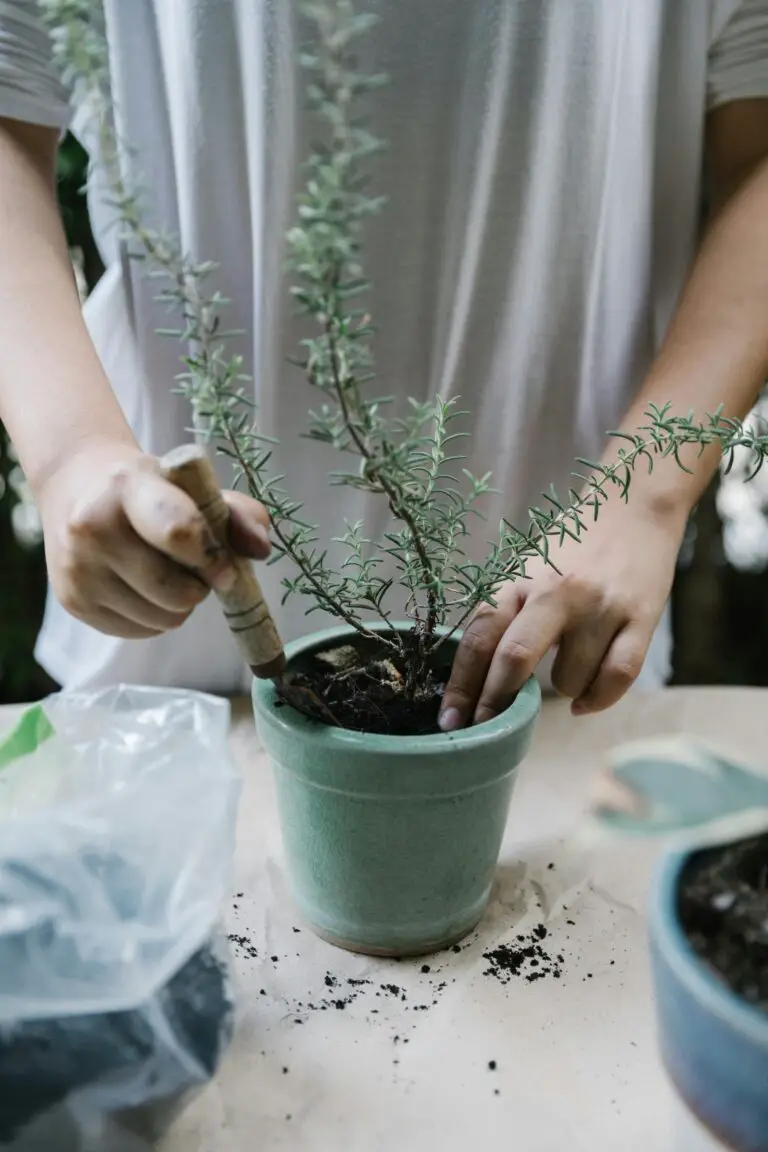
During the frosty months, it’s vital to protect your sedum’s crown from excessive moisture, which can spell disaster for these succulent beauties. Mulch acts as an insulating layer, but remember, dry mulch is the way to go—think straw or pine needles. Real-life example: Imagine a sedum tucked in a snowy bed, its roots snug and dry, just like a hibernating bear in its den, ready to emerge vigorous in the spring.
Winterizing Your Sedum
Winterizing is more than just a buzzword; it’s a survival kit for your sedum. When the autumn leaves begin to fall, reduce watering to help harden off your plants. Sedum, living its best life in well-draining soil, should stay relatively dry to avoid root rot. It’s like prepping for a ski trip—gear up to avoid getting wet and cold!
Beating the Summer Heat
As the world thaws and blooms, your sedum springs into action. Full sun can be a double-edged sword; while sedum loves basking in the sunlight, the scorching summer heat can be a challenge. Watering in the early morning sets the stage for a day of healthy growth. It’s akin to sipping a refreshing iced tea before stepping out into the heatwave—invigorating and protective.
Remember, sedum is resilient, but it’s not a cactus. Keep an eye on those blistering heat waves. A temporary shade might just be the day-saving umbrella on a beach trip for your green companions. A layer of organic mulch to retain moisture could also be likened to a thoughtful gardener laying out a cool towel for a sedum sunbathing session.
Whether it’s winter’s frost or summer’s blaze, the secret to year-round sedum care lies in your attentiveness. Tune into nature’s rhythms, like a gardener in sync with the tempo of the seasons, and watch as your sedum garden thrives, becoming a lush testament to your nurturing hand.
Troubleshooting Common Sedum Growing Challenges
If you’re cultivating sedum in your garden for that eye-catching tapestry of succulent beauty, it’s important to stay vigilant. Sedum plants, while hardy and forgiving, can still face their fair share of issues. Here we’ll delve into the typical problems sedum growers might encounter and arm you with the knowledge to tackle them head-on.
Imagine this: you’ve chosen the perfect sunny spot for your sedum—somewhere it can bask in the golden rays just as it likes. Yet, one morning, you stroll through your blooming haven and notice something’s amiss. The normally vibrant leaves are speckled with mysterious spots, or maybe you spot some uninvited tiny insects having a feast. Pest infestations and disease aren’t just a nuisance; they can threaten the livelihood of your sedum and, by extension, the serenity of your garden haven.
What’s a green-thumbed enthusiast to do? First things first, keep an eye out for aphids, those pesky green critters that suck the life out of plants. If they make an appearance, it’s time for action. Gentle solutions like neem oil can send them packing without harm to your plants or the environment. Similarly, other bugs like scale insects and spider mites can cause trouble. But fear not—appropriate insecticidal soap or horticultural oils can save the day.
But pests are only half the story. Fungal diseases often swoop in, especially when conditions are too damp or air circulation is poor. You glance over and notice your sedum’s leaves are a bit too soggy, or there’s an unfamiliar white fuzz that certainly wasn’t part of the aesthetic you were aiming for. This is where your detective hat comes in handy. Proper spacing between plants to encourage airflow, and avoiding overhead watering to keep those leaves dry, can often prevent such ills.
Remember, the key to growing sedum without a hitch is to be observant and proactive. With these tips and techniques, you’ll be well on your way to enjoying a luscious, resilient sedum display that’s the envy of the neighborhood. And when challenges arise, you’ll be equipped to nip them in the bud with confidence and expertise.

Frequently Asked Questions
For those green thumbs curious about crafting a sedum sanctuary, you’ve landed in the right spot! Let’s dig into those burning queries you’ve been rooting around for answers to, and make sure your sedum sprouts splendidly.
Where Can I Plant Sedum to Thrive?
Sedum, the resilient rock star of the succulent world, isn’t fussy about where it lays down roots. Sunny spots with well-drained soil make it beam with joy, but it’s no diva. From stone walls to rooftop gardens, sedum can make itself at home. Picture an urban terrace transforming into a green retreat, with sedum soaking up the city sun. Now that’s high-rise living for plants!
What Type of Soil Does Sedum Prefer?
Imagine a cactus in the desert – it’s all about the drainage. Mix your soil with some gritty humor, including sand or gravel, and watch your sedums smirk back at you with growth. Avoid the swamp vibes; these plants can’t swim and dread ‘soil soup.’
Can Sedum Handle Extreme Weather?
Sedum is the superhero of the succulent league when it comes to weather. Scorching summers or frosty winters, it stands unshaken. Picture it as the stoic garden gnome amidst your backyard’s climate rollercoaster, facing down the elements with a green grin.
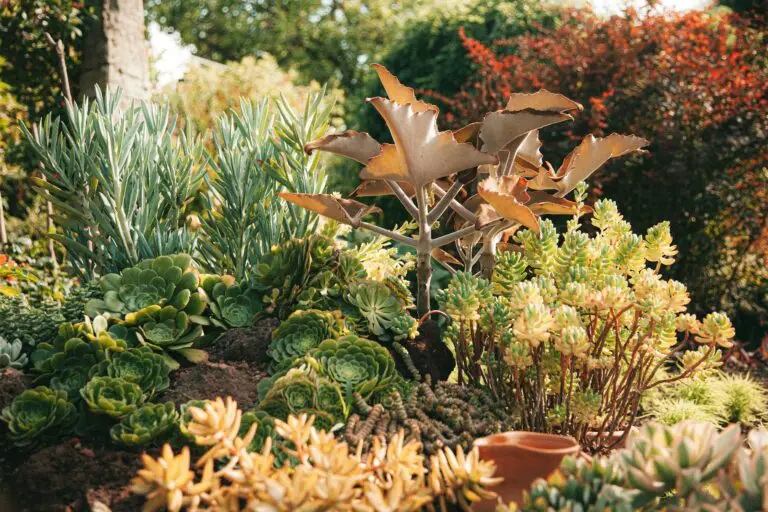
Is Sedum Friendly with Other Plants?
Ever the social butterfly, sedum plays well with others. It’s like that one friend who can mingle with any crowd, be it flashy annuals or the more permanent shrubbery elite. They particularly enjoy the company of lavender and ornamental grasses, creating a textural masterpiece worthy of any garden magazine cover.
How Often Should I Water My Sedum?
Lay down the watering can, folks! Sedum is a drought-tolerant darling, content with occasional sips rather than a deluge. Envision watering like you’re toasting to the good life – a gentle clink of glasses rather than a drenching downpour. This way, your sedum keeps its spirits – and leaves – high and dry.


